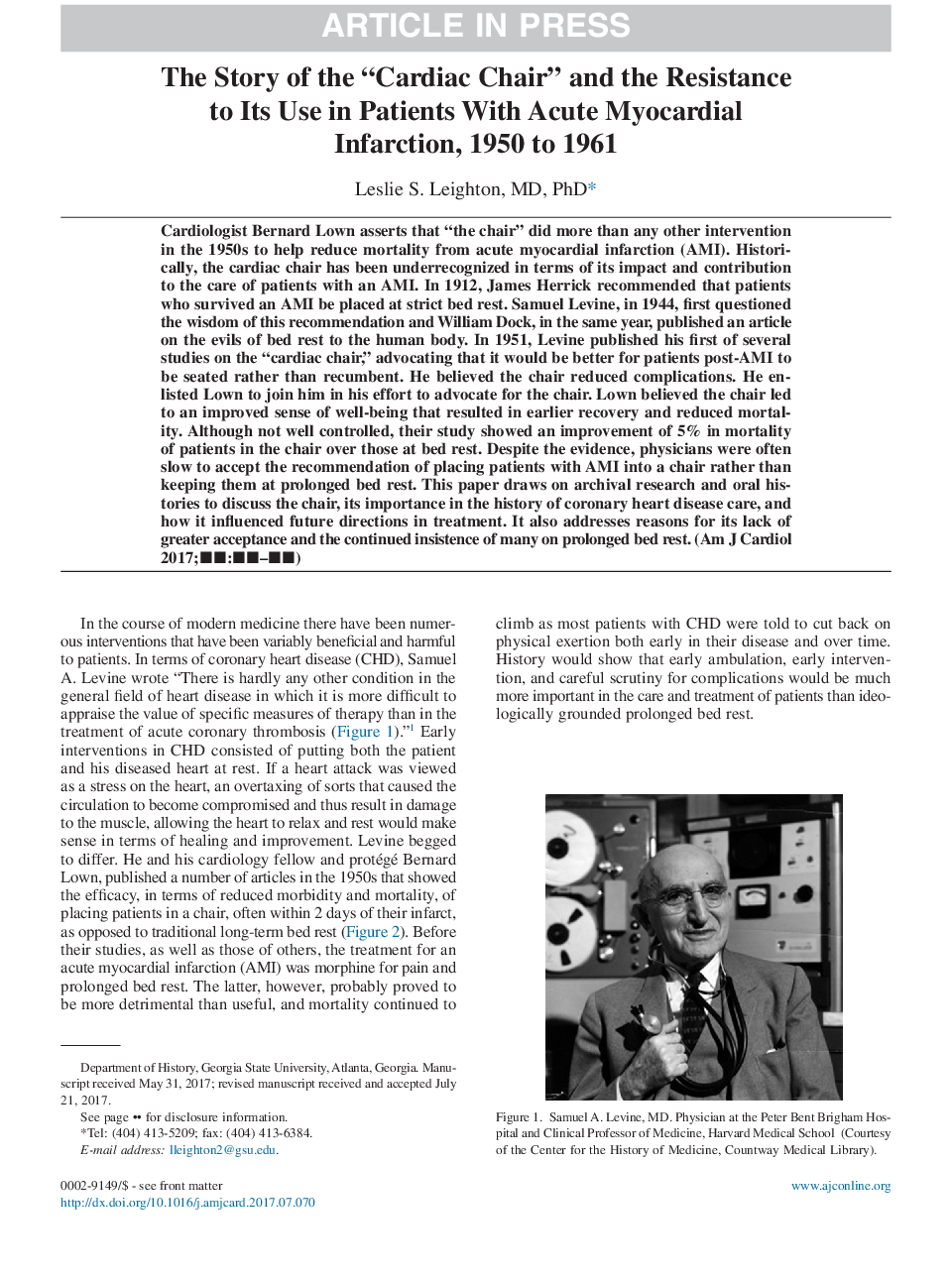| Article ID | Journal | Published Year | Pages | File Type |
|---|---|---|---|---|
| 8651708 | The American Journal of Cardiology | 2017 | 7 Pages |
Abstract
Cardiologist Bernard Lown asserts that “the chair” did more than any other intervention in the 1950s to help reduce mortality from acute myocardial infarction (AMI). Historically, the cardiac chair has been underrecognized in terms of its impact and contribution to the care of patients with an AMI. In 1912, James Herrick recommended that patients who survived an AMI be placed at strict bed rest. Samuel Levine, in 1944, first questioned the wisdom of this recommendation and William Dock, in the same year, published an article on the evils of bed rest to the human body. In 1951, Levine published his first of several studies on the “cardiac chair,” advocating that it would be better for patients post-AMI to be seated rather than recumbent. He believed the chair reduced complications. He enlisted Lown to join him in his effort to advocate for the chair. Lown believed the chair led to an improved sense of well-being that resulted in earlier recovery and reduced mortality. Although not well controlled, their study showed an improvement of 5% in mortality of patients in the chair over those at bed rest. Despite the evidence, physicians were often slow to accept the recommendation of placing patients with AMI into a chair rather than keeping them at prolonged bed rest. This paper draws on archival research and oral histories to discuss the chair, its importance in the history of coronary heart disease care, and how it influenced future directions in treatment. It also addresses reasons for its lack of greater acceptance and the continued insistence of many on prolonged bed rest.
Related Topics
Health Sciences
Medicine and Dentistry
Cardiology and Cardiovascular Medicine
Authors
Leslie S. MD, PhD,
